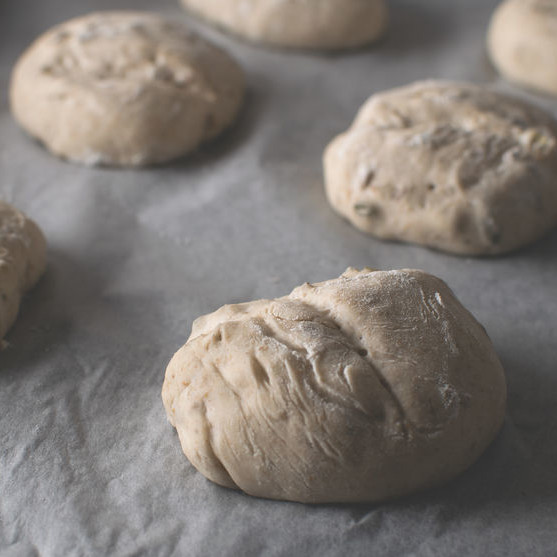
Gluten Washing Tests
What are Gluten Washing Tests?
Gluten washing tests are laboratory analyses that provide information about the quantity and quality of gluten in wheat flour. These tests are used to evaluate the baking quality of hard and soft wheat flours used in the production of bakery products.
Currently, two main gluten washing tests are available to bakers and millers:
- Manual or hand washing method. It provides a direct measurement of the gluten quantity.
- Automatic gluten washing, usually performed by an Glutomatic. This method provides information about the quantity and quality (strength) of flour.
How do Gluten Washing Tests work?
Manual or hand washing method1
The Cereals and Grains Association (AACC International) has standardized the manual gluten washing in the Official Method 38-10.01.
This test involves forming a dough and washing the starch and water-soluble components (e.g. water-extractable arabinoxylans, sugars, water-soluble proteins) out of the dough. A wet and elastic substance made of water-insoluble proteins (gliadins and glutenins, about 85% total protein) remains after the washing procedure whose amount is an indication of gluten quantity. The total wet or dry gluten (weight obtained after controlled drying of the wet gluten) is expressed as a percent.
Automated gluten washing (Glutomatic)2
AACCI has standardized this method in the Official Method 38-12.02 (Wet Gluten, Dry Gluten, Water-Binding Capacity, and Gluten Index). This is an automated procedure uses the Glutomatic instrument and includes a centrifugation step to dehydrate the gluten.
Application
Here’s how to preform the hand washing test, using the AACCI Official Method 38-10.01.1 Start with this equipment:
- Porcelain cup
- Spatula (for weighing and work dough)
- Dessicator
- Petri dishes
- Convection oven
- Tongs
- Chronometer
- Analytical balance
- US No.80 sieve
Ingredients and reagents needed:
- Wheat flours
- Water (tap)
- NaCl
Procedure (should be carried out in duplicate or triplicate for better results):
- Determine flour moisture content.
- Weigh 25 g flour into porcelain cup or mortar.
- Add tap water from a buret to form a dough. 50% water absorption is mostly used (0.5 g water / g of flour or 12,5 g water).
- Knead (work) the dough by hand until a firm to medium consistency dough ball is obtained.
- Submerge the dough and soak with sufficient water in a beaker for 20-60 min at room temperature. Washing efficiency of hard wheat flours is improved with increased soaking time and temperature. Soft wheat flours are easier to wash if soaking time does not exceed 20 min.
- Knead dough gently (massage) while using wash water and replace with fresh water until starch and all soluble matter are removed. When much of the starch has been removed, the gluten ball will become darker and more elastic. This step usually takes 15–80 min and the time depends on the gluten content and wheat hardness.
- A cloth or sieve can be used to collect scattered gluten pieces lost in the wash water (keeping them from going into the drain), especially in the case of soft wheat. NaCl can be added to the soaking and wash water to handle soft wheat doughs.
- To determine whether gluten is starch-free, squeeze the gluten mass and let 1 or 2 drops fall into a beaker containing clear water. If starch is still present, it will make the water cloudy.
- When the gluten mass is finally clean, press it between the hands and roll into a ball. Remove excess water by working the mass until it just begins to stick.
- Place wet gluten in a glass Petri dish for weighing and drying. Use the following calculation to calculate wet gluten:
- % wet gluten=wet gluten (g)flour sample weight (g)
- Transfer gluten ball to oven, dry to constant weight at 430°F (220°C) for 25 minutes, and allow to cool down for approximately 15 minutes in dessicator.
- Weigh as dry gluten. Use the following calculation to calculate dry gluten:
- % dry gluten=dry gluten (g)flour sample weight (g)
Relationship between gluten washing tests and baking quality
| Flour | Wet gluten | Dry gluten | Loaf Volume | End-application |
| Hard wheat | Highest, 30.0–45.0% | Highest, 12–15%
Approximately equal to total protein content of flour by NIR or Kjeldahl method. |
Highest
(good breadmaking functionality) |
|
References
- AACC International. Approved Methods of Analysis, 11th Ed. Method 38-10.01. Final approval April 13, 1961; Reapproval November 3, 1999. Cereals & Grains Association, St. Paul, MN, U.S.A.
- AACC International. Approved Methods of Analysis, 11th Ed. Method 38-12.02. First approval November 8, 2000. Cereals & Grains Association, St. Paul, MN, U.S.A.

